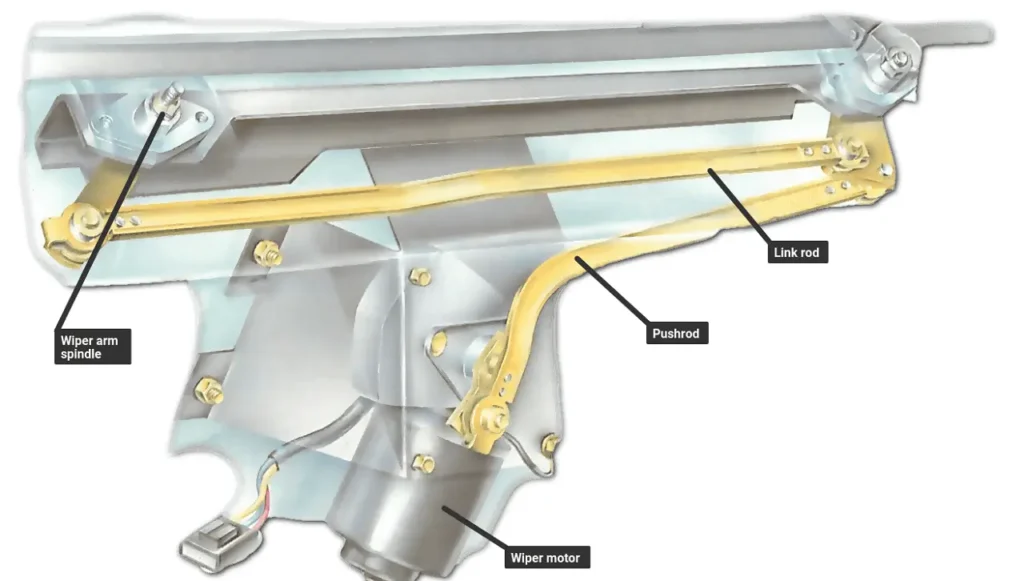A wiper system is an essential safety feature in automotive vehicles, meticulously engineered to ensure that drivers maintain optimal visibility under various environmental conditions. Whether faced with heavy rain, swirling snow, or accumulated debris, a well-functioning wiper system is critical for safety on the road. This intricate system comprises several interconnected components that work harmoniously to achieve effective windshield clearing.

Core Components of a Wiper System
1. Wiper Motors:
At the heart of the wiper system are electric motors that serve as its driving force. These motors convert electrical energy from the vehicle into mechanical motion, providing the necessary power to initiate the wiping action. The efficiency and responsiveness of the motor are vital for ensuring that the wipers react promptly to changing weather conditions.
2. Wiper Arms and Blades:
The wiper arms serve as the mechanical link between the motor and the rubber blades responsible for clearing the windshield. Attached firmly to the wiper motor, these arms articulate with precision, while the rubber blades are engineered to conform closely to the windshield’s surface, facilitating effective removal of water and debris while minimizing streaking.
3. Wiper Linkage:
The linkage is a sophisticated system of rods and pivots that translates the rotational motion generated by the motor into the back-and-forth sweeping movement of the wiper arms. This critical component ensures that the movement of the wipers is synchronized and efficient, allowing for complete coverage of the windshield.
4. Washer System:
Complementing the wiper system, the washer system consists of a reservoir, a pump, and strategically positioned nozzles. This system distributes special windshield washer fluid, enhancing the cleaning process and ensuring clear visibility by aiding the rubber blades in removing stubborn grime and other obstructions.
5. Intermittent Wiper Control:
This feature allows drivers to adjust the intervals between wiping cycles based on the intensity of precipitation. Variable speed settings enable more efficient operation, conserving energy and reducing wear on wiper components while providing optimal visibility.
6. Sensor (Optional):
Many modern vehicles incorporate advanced rain sensors, which automatically detect moisture levels on the windshield. When activated, these sensors momentarily engage the wipers, adjusting their speed according to the intensity of the rain, thus providing seamless and responsive operation that enhances driver convenience and safety.
How the Wiper System Operates
The operation of the wiper system begins with driver engagement. Upon activating the wiper switch, the wiper motor springs into action, initiating the sequence of movements that will ultimately clear the windshield. The motor’s rotational power is effectively converted into a back-and-forth motion of the wiper arms via the linkage system. As the wiper arms move, the rubber blades make contact with the windshield, efficiently wiping away water, snow, and debris. In instances where visibility is severely compromised, the washer system comes into play. Upon request, the washer pump releases cleaning fluid onto the glass, enhancing the effectiveness of the wiper blades in removing stubborn contaminants.
Types of Wiper Systems
Wiper systems are available in various configurations to cater to different vehicle needs:
- Conventional Wipers: This traditional design features two wiper arms that work in an overlapping arc across the windshield, providing efficient coverage.
- Intermittent Wipers: These wipers enable users to customize wiping intervals, accommodating varying precipitation levels and improving operational efficiency.
- Rain-Sensing Wipers: Equipped with technology that gauges rain intensity, these automated wipers adjust their speed for optimal performance, relieving the driver from constant manual adjustments.
- Rear Wipers: Designed for vehicles with hatchbacks or SUVs, rear wipers typically feature a single arm that sweeps across the rear windshield, providing additional visibility in inclement weather.
Advancements in Wiper Blade Technology
Contemporary wiper blades utilize cutting-edge materials and innovative designs to enhance their performance. High-quality rubber compounds have been developed to improve wiping efficiency and extend the lifespan of the blades. These advancements not only ensure clearer visibility but also contribute to a quieter operation and reduced wear on the windshield surface. In summary, the wiper system is an integral element of automotive safety, operating through a combination of essential components and advanced technologies that work together to enhance driver visibility. This system’s sophistication reflects ongoing developments in automotive engineering, ensuring that drivers can navigate confidently in the face of challenging weather conditions.





